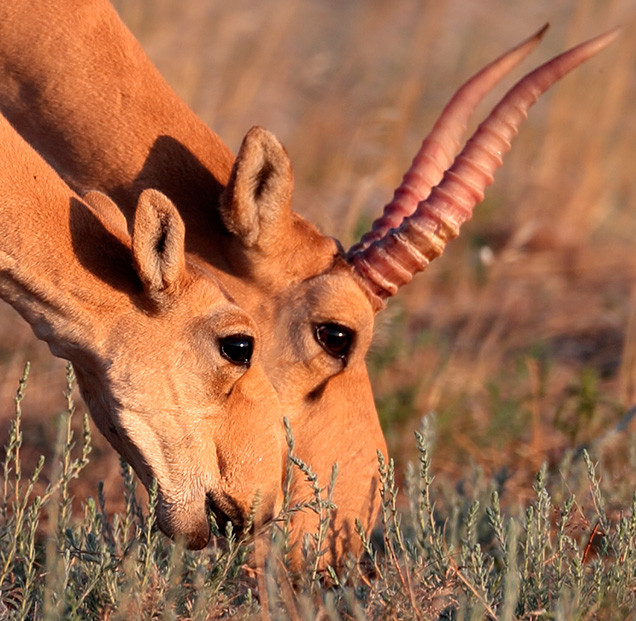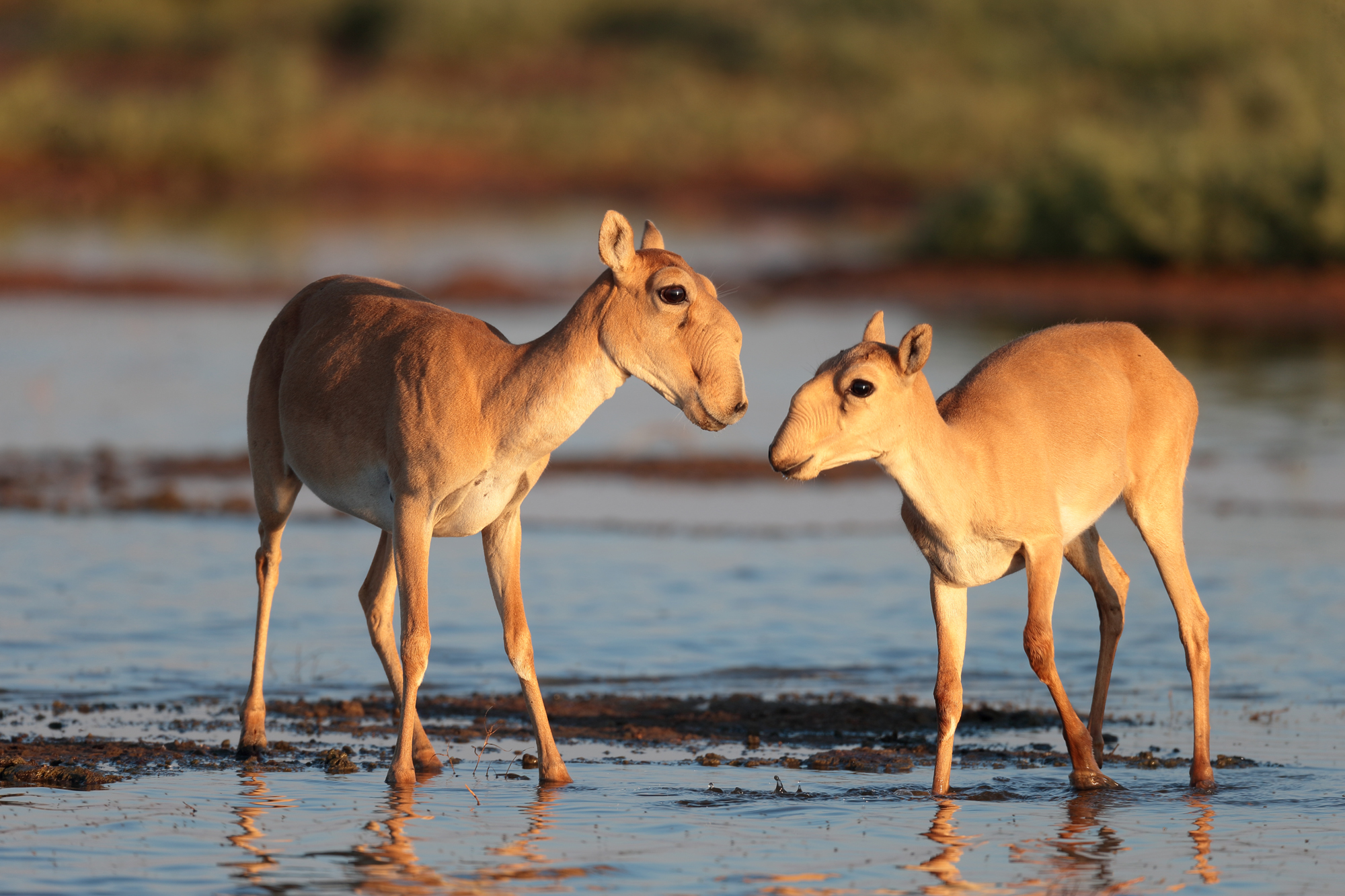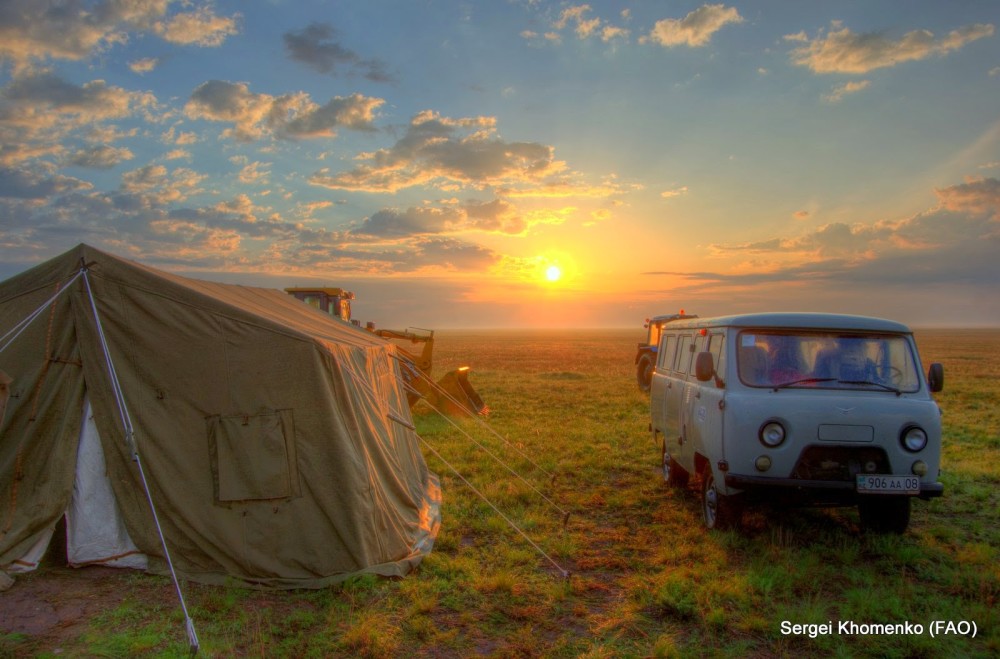Saiga antelope in Uzbekistan

Status
Critically endangered
Population
100,000
Scientific name
Saiga tatarica
The unusual looking saiga antelope is critically endangered, and with an estimated resident population of only 500 animals in Uzbekistan, we are facing a very real risk of losing it from yet another of its traditional ranges. In total, the global population of saiga is now estimated at ca.100,000, down from 1,250,000 in the mid-1970s, with most animals found in Kazakhstan.
The problem
Uncontrolled illegal hunting for both horns (male horns are exported for the traditional Chinese medicine trade) and meat, since the break-up of the former USSR, has led to a catastrophic fall in saiga numbers.
Increasingly, the fast pace of development of infrastructure for oil and gas extraction in the region is also threatening the saigas’ habitat. The huge oil pipes also create barriers to their migration.
The only viable saiga population in Uzbekistan lives on Vozrozhdeniye Island, the focal area for this project. However, because the Aral Sea has all but dried up due to water extraction for irrigation, a land corridor to the saigas’ home has opened up. With the removal of the island’s restricted status it means that people are now freely entering the area to hunt the saigas.
The solution
 We plan to research the status of saigas and biodiversity on Vozrozhdeniye Island, building on the opportunity for its designation as a protected area. Previous Saiga Conservation Alliance (SCA) research found that anthropogenic factors are heavily impacting the Vozrozhdeniye saigas’ range and behaviour, and with poaching a new threat it makes urgent research and intervention essential.
We plan to research the status of saigas and biodiversity on Vozrozhdeniye Island, building on the opportunity for its designation as a protected area. Previous Saiga Conservation Alliance (SCA) research found that anthropogenic factors are heavily impacting the Vozrozhdeniye saigas’ range and behaviour, and with poaching a new threat it makes urgent research and intervention essential.
Impassable, fragile terrain on Vozrozhdeniye makes it suited to implementing cutting-edge technologies to monitor the island’s saigas. Satellite imagery will enable us to produce a robust estimate of the population size and range for the first time. Camera traps will allow us to understand how saigas use the island.
Of course, as with all SCA projects, we will be working closely with local people who are keen to share their knowledge of their saigas, as well as protecting them for future generations to enjoy.
Latest update
In 2015, an estimated 200,000 saiga died within a few days due to a fatal outbreak of a bacteria that normally co-exists harmlessly with saiga. The devastating die-off was a big setback for saiga conservation efforts and the team  had to focus on the urgent job of finding out what caused such a huge percentage of the population to die. You can see a gallery of images taken by the research team here – please note that you may find these images upsetting. Many of you generously donated to our emergency fundraising appeal, with which we were able to fund an urgent research expedition to identify the cause of the outbreak and investigate how we may be able to prevent such catastrophic situation in the future.
had to focus on the urgent job of finding out what caused such a huge percentage of the population to die. You can see a gallery of images taken by the research team here – please note that you may find these images upsetting. Many of you generously donated to our emergency fundraising appeal, with which we were able to fund an urgent research expedition to identify the cause of the outbreak and investigate how we may be able to prevent such catastrophic situation in the future.
Our colleagues at the Saiga Conservation Alliance have been working tirelessly to get to the bottom of the mystery and you can find their latest update here.
